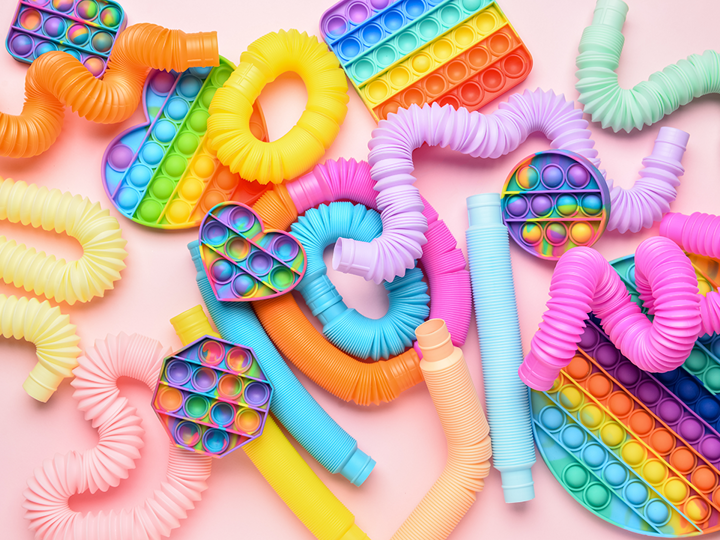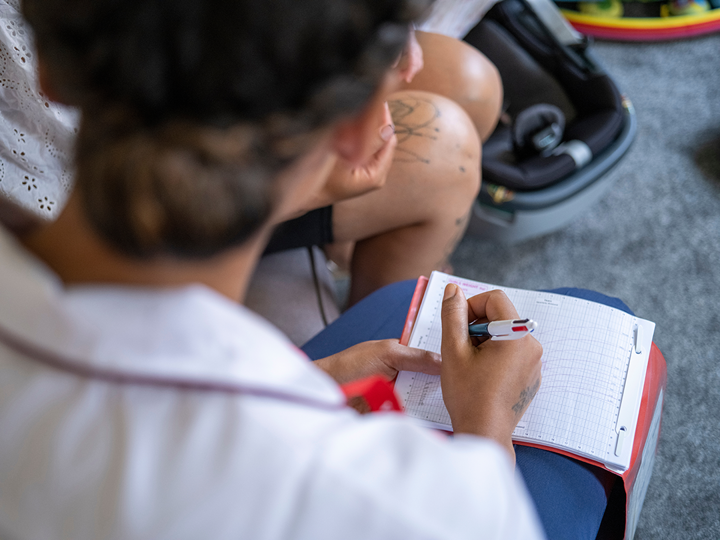Sensory bags
- 1-5 Years
- 5-11 Years
- 11-19 Years
- SEND
- Behaviour, emotions and mental health
- Child development and growing up

A sensory bag is a bag filled with objects. These objects will be things that help your child by helping them use specific senses (like touch, smell, sights, sound or taste). This can help your child to calm down or soothe themselves when they are upset or agitated.
Your child's sensory bag should be made specifically for them. It should help them with their own individual sensory needs.
Explore the topics on this page:
Benefits of sensory bags
There are lots of benefits of having a sensory bag available for your child. They can help children:
- calm down and regroup if they feel overwhelmed, anxious or stressed by other senses
- helps you know which sensory activities are most helpful for them
- manage their emotions and behaviours
- develop their hands skills (also known as fine motor skills)
How to use a sensory bags
Sensory bags are to help your child calm down and be able to manage their behaviour independently. There is no specific way your child should use the objects in the sensory bag. But they should help calm your child down not overwhelm them.
When you first use the sensory bags with your child, you will need to remind and support them to use the bag. Try to encourage them to use the bag when they are beginning to seem stressed or anxious. Over time your child will know when they need to use to and will be it independently without a reminder.
Your child may prefer to use a specific toy or object to calm down. This can help you understand what kind of techniques you can use to help calm them down in the future. For example, if your child finds blowing on a toy calming, they may find taking 5 deep breaths to be calming too. This information can be helpful at school or out and about without the calming object.
Making your own sensory bag
Sensory bags should be based on your child's sensory needs. This is for the items in the bag and the bag itself.

Picking a bag
You will need to pick a bag that matches the needs of your child. You can use any kind of movable container for your child's sensory bag. It does not have to be a bag.
If your child likes the surprise of reaching in and finding something, use a bag you can't see into such as a cloth drawstring bag or tote bag.
If your child does not like touching things they cannot see or are very sensitive to the textures they touch, use something that your child can see through. For example, a clear zipped pouch, a clear pencil case or a shoe box.
Filling a sensory bag
A sensory bag should be filled with objects that meet your child's sensory needs. This will be unique to every child. You can swap objects out if you feel like they are not helping your child.
The objects don't have to just be for touch. They can be for other senses like sight, smell, sound or touch. Some suggestions of the type of objects you may want to add into the bag:
- Different pieces of fabrics or scarves
- Smooth and textured stones, pebbles and shells
- Squeezy toys like a stress ball or pop-out toy
- Putty toys like therapy putty, silly putty, 'slime' or 'goop'
- Stretchy toys like Koosh balls or bendy rubber toys
- Soft toys like beanie babies or stuffed animals
- Small toys with movable parts like toy cars, a slinky or a rainmaker
- Fidget toys like the spinning fidget toy or the popper fidget toy
- Objects to fiddle with like hair bands, keyrings and bracelets
- Chew toys such as chewable jewellery
- Blow toys like harmonicas, whistles or bubble blowing
- Crunchy and suckable food like carrots, boiled sweets, liquorice and lollipops to suck and crunch
- Scented lotions with calming smells like vanilla or linen
- Objects with natural smells like herb cuttings or sticks
- A cut-out of two footprints, these can be placed on the floor for jumping or stomping on
- A cut-out of two handprints with tack or tape, these can be placed on the wall for your child to push against
Pre-made sensory bags are available online. Some parents and carers may find them to be a helpful starting point. Pre-made sensory bags are unlikely to match your child's sensory needs.
Sensory bags for older children, teenagers and young people
Sensory bags are not just for young children. They can be adapted for older children, teenagers and young people. Your child or young person may want to choose the objects that they will have in their sensory bag.
If your child or young person has not had a sensory bag before, they can try a selection of different objects to see what helps them when they are feeling anxious or stressed.
Last reviewed: 1 November, 2024

